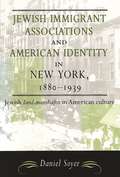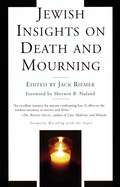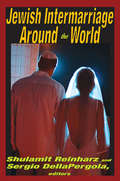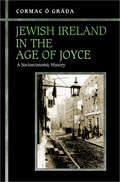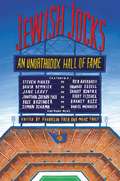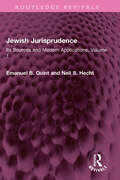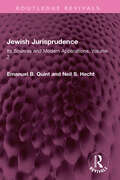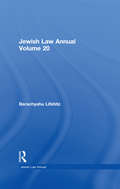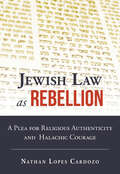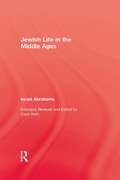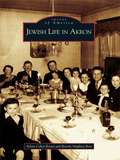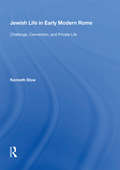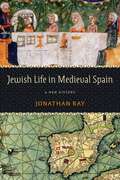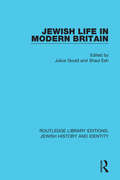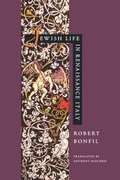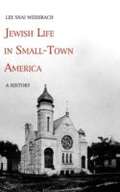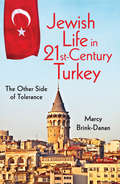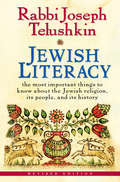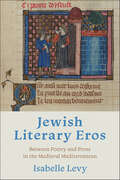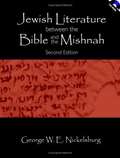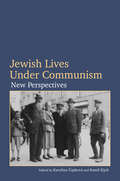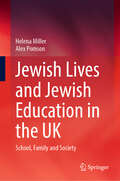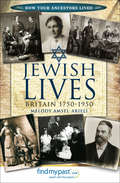- Table View
- List View
Jewish Immigrant Associations and American Identity in New York, 1880-1939: Jewish Landsmanshaftn in American Culture (American Jewish Civilization Series)
by Daniel SoyerLandsmanshaftn, associations of immigrants from the same hometown, became the most popular form of organization among Eastern European Jewish immigrants to the United States in the late 19th and early 20th centuries. Jewish Immigrant Associations and American Identity in New York, 1880-1939, by Daniel Soyer, holds an in-depth discussion on the importance of these hometown societies that provided members with valuable material benefits and served as arenas for formal and informal social interaction. In addition to discussing both continuity and transformation as features of the immigrant experience, this approach recognizes that ethnic identity is a socially constructed and malleable phenomenon. Soyer explores this process of construction by raising more specific questions about what immigrants themselves have meant by Americanization and how their hometown associations played an important part in the process.
Jewish Insights on Death and Mourning
by Jack RiemerThis collection of Jewish reflections on issues of death and dying make this an indispensable resource for coping with some of life's most difficult moments.
Jewish Intermarriage Around the World
by Sergio DellaPergolaMost research on intermarriage between Jews and non-Jews focuses on the United States. This volume takes a path-breaking approach, examining countries with smaller Jewish populations so as to better understand countries with larger Jewish populations. It focuses on intermarriage in Great Britain, France, Scandinavia, the Soviet Union, Mexico, Venezuela, Canada, South Africa, Australia, Argentina and Curacao, then applies the findings to the United States.In earlier centuries such a volume might have yielded much diff erent conclusions. Then Jews lived in more countries, intermarriage was not as prevalent, and social science had little to contribute. Before World War II, the Jewish population was dispersed much diff erently, and it continues to shift around the world because of both push and pull factors. Like demography, intermarriage is a dynamic process. What is true today was probably not true in the past, nor will it be true tomorrow.The contributors to this volume locate new forms of Jewish family life—single parents, gay/lesbian parents, adults without children, and couples with multiple backgrounds. These multiple family forms raise a new question—what is a Jewish family—as well as a variety of related issues. Do women and men have diff erent roles in intermarriage? Does a family need two people to raise children? Should there be patrilineal descent? Where do adoption, single parenting, lesbian and gay identities, and more, fit into the picture? Broadly, what role does the family play in transmitting a group's culture from generation to generation? This volume presents a portrait of Jewish demography in the twenty-first century, brilliantly interweaving global processes with significant local variations.
Jewish Ireland in the Age of Joyce: A Socioeconomic History
by Cormac Ó GrádaJames Joyce's Leopold Bloom--the atheistic Everyman of Ulysses, son of a Hungarian Jewish father and an Irish Protestant mother--may have turned the world's literary eyes on Dublin, but those who look to him for history should think again. He could hardly have been a product of the city's bona fide Jewish community, where intermarriage with outsiders was rare and piety was pronounced. In Jewish Ireland in the Age of Joyce, a leading economic historian tells the real story of how Jewish Ireland--and Dublin's Little Jerusalem in particular--made ends meet from the 1870s, when the first Lithuanian Jewish immigrants landed in Dublin, to the late 1940s, just before the community began its dramatic decline. In 1866--the year Bloom was born--Dublin's Jewish population hardly existed, and on the eve of World War I it numbered barely three thousand. But this small group of people quickly found an economic niche in an era of depression, and developed a surprisingly vibrant web of institutions. In a richly detailed, elegantly written blend of historical, economic, and demographic analysis, Cormac Ó Gráda examines the challenges this community faced. He asks how its patterns of child rearing, schooling, and cultural and religious behavior influenced its marital, fertility, and infant-mortality rates. He argues that the community's small size shaped its occupational profile and influenced its acculturation; it also compromised its viability in the long run. Jewish Ireland in the Age of Joyce presents a fascinating portrait of a group of people in an unlikely location who, though small in number, comprised Ireland's most resilient immigrant community until the Celtic Tiger's immigration surge of the 1990s.
Jewish Jocks: An Unorthodox Hall of Fame
by Franklin Foer Marc TracyJEWISH JOCKS: AN UNORTHODOX HALL OF FAME is a timeless collection of biographical musings, sociological riffs about assimilation, first-person reflections, and, above all, great writing on some of the most influential and unexpected pioneers in the world of sports. Featuring work by today's preeminent writers, these essays explore significant Jewish athletes, coaches, broadcasters, trainers, and even team owners (in the finite universe of Jewish Jocks, they count!).Contributors include some of today's most celebrated writers covering a vast assortment of topics, including David Remnick on the biggest mouth in sports, Howard Cosell; Jonathan Safran Foer on the prodigious and pugnacious Bobby Fischer; Man Booker Prize-winner Howard Jacobson writing elegantly on Marty Reisman, America's greatest ping-pong player and the sport's ultimate showman. Deborah Lipstadt examines the continuing legacy of the Munich Massacre, the fortieth anniversary of which coincided with the 2012 London Olympics. Jane Leavy reveals why Sandy Koufax agreed to attend her daughter's bat mitzvah. And we learn how Don Lerman single-handedly thrust competitive eating into the public eye with three pounds of butter and 120 jalapeño peppers. These essays are supplemented by a cover design and illustrations throughout by Mark Ulriksen.From settlement houses to stadiums and everywhere in between, JEWISH JOCKS features men and women who do not always fit the standard athletic mold. Rather, they utilized talents long prized by a people of the book (and a people of commerce) to game these games to their advantage, in turn forcing the rest of the world to either copy their methods-or be left in their dust.
Jewish Jurisprudence: Its Sources and Modern Applications, Volume 1 (Routledge Revivals)
by Neil S. Hecht Emanuel B. QuintFirst published in 1980, Jewish Jurisprudence is the first volume of an important series analysing and setting forth the substantive principles of Jewish jurisprudence. It encompasses the applicable sources of Jewish law from the original transmission to Moses on Sinai of the terse written law and its accompanying oral elaboration through its development to the present day. Each topic concludes with the authors’ view of the present status of the law. In former years, the public teaching and discussion of law occupied a prominent place in Jewish culture. Today, estrangement from the language of Halacha has made it less accessible to the general public. This series is an attempt to open the world of Jewish law to the layperson, general scholars and specialists in jurisprudence.
Jewish Jurisprudence: Its Sources and Modern Applications, Volume 2 (Routledge Revivals)
by Neil S. Hecht Emanuel B. QuintFirst published in 1986, Jewish Jurisprudence is the second volume of an important series analysing and setting forth the substantive principles of Jewish jurisprudence. It encompasses the applicable sources of Jewish law from the original transmission to Moses on Sinai of the terse written law and its accompanying oral elaboration through its development to the present day. Each topic concludes with the authors’ view of the present status of the law. In former years, the public teaching and discussion of law occupied a prominent place in Jewish culture. Today, estrangement from the language of Halacha has made it less accessible to the general public. This series is an attempt to open the world of Jewish law to the layperson, general scholars and specialists in jurisprudence.
Jewish Law Annual Volume 20 (Jewish Law Annual #20)
by Berachyahu LifshitzVolume 20 of The Jewish Law Annual features six detailed studies. The first three articles consider questions which fall under the rubric of halakhic methodology. The final three articles address substantive questions regarding privacy, cohabitation and medical triage. All three ‘methodological’ articles discuss creative interpretation of legal sources. Two (Cohen and Gilat) consider the positive and forward-thinking aspects of such halakhic creativity. The third (Radzyner) examines tendentious invocation of new halakhic arguments to advance an extraneous interest. Cohen explores positive creativity and surveys the innovative midrashic exegeses of R. Meir Simha Hakohen of Dvinsk, demonstrating his willingness to base rulings intended for implementation on such exegesis. Gilat examines exegetical creativity as to the laws of capital offenses. Midrashic argumentation enables the rabbinical authorities to set aside the literal sense of the harsh biblical laws, and implement more suitable penological policies. On the other hand, Radzyner’s article on tendentious innovation focuses on a situation where novel arguments were advanced in the context of a power struggle, namely, Israeli rabbinical court efforts to preserve jurisdiction. Two articles discuss contemporary dilemmas. Spira & Wainberg consider the hypothetical scenario of triage of an HIV vaccine, analyzing both the talmudic sources for resolving issues related to allocating scarce resources, and recent responsa. Warburg discusses the status of civil marriage and cohabitation vis-à-vis payment of spousal maintenance: can rabbinical courts order such payment? Schreiber’s article addresses the question of whether privacy is a core value in talmudic law: does it indeed uphold a ‘right to privacy,’ as recent scholars have claimed? The volume concludes with a review of Yuval Sinai’s Application of Jewish Law in the Israeli Courts (Hebrew).
Jewish Law and Contemporary Issues
by Arthur J. Jacobson Bleich, J. David and Jacobson, Arthur J. J. David BleichOrganized as a series of authoritative discussions, this book presents the application of Jewish law - or Halakhah - to contemporary social and political issues. Beginning with the principle of divine revelation, it describes the contents and canons of interpretation of Jewish law. Though divinely received, the law must still be interpreted and 'completed' by human minds, often leading to the conundrum of divergent but equally authentic interpretations. Examining topics from divorce to war and from rabbinic confidentiality to cloning, this book carefully delineates the issues presented in each case, showing the various positions taken by rabbinic scholars, clarifying areas of divergence, and analyzing reasons for disagreement. Written by widely recognized scholars of both Jewish and secular law, this book will be an invaluable source for all who seek authoritative guidance in understanding traditional Jewish law and practice.
Jewish Law as Rebellion: A Plea for Religious Authenticity and Halachic Courage
by Nathan Lopes CardozoJewish Law as Rebellion is unconventional and controversial in its approach to the world of Jewish Law and its response to religious crises. The book delves into the contemporary application and development of halacha and pointedly protests many accepted methods and ideals, offering new solutions to existing halachic dilemmas. Rabbi Cardozo discusses hot topics such as same-sex marriage, conversion, and religion in the State of Israel and presents a critical analysis and explanation of the application of halacha.
Jewish Life In The Middle Ages
by AbrahamsFirst published in 2010. Routledge is an imprint of Taylor & Francis, an informa company.
Jewish Life in Akron (Images of America)
by Beverly Magilavy Rose Arlene Cohen RossenIn the mid-1800s, many Jewish families joined the western expansion and emigrated from Germany to Akron, a canal town that also had an inviting countryside. They sought economic security and religious freedom--a new start in a new town. But it was not an easy life. They organized their Jewish community into cultural and religious groups, and by the 20th century, their efforts attracted Central and Eastern European Jews with differing lifestyles. In 1929, the Akron Jewish Center opened and provided a place for all of the diverse Jewish groups in Akron to gather. It also played an enormous role in raising awareness of the richness of Jewish life in the Akron community. Jewish Life in Akron celebrates 150 years of Jewish culture, family, business, and organizational life through vintage images, many never before published, and supporting history.
Jewish Life in Early Modern Rome: Challenge, Conversion, and Private Life
by Kenneth StowThe essays in this second volume by Kenneth Stow explore the fate of Jews living in Rome, directly under the eye of the Pope. Most Roman Jews were not immigrants; some had been there before the time of Christ. Nor were they cultural strangers. They spoke (Roman) Italian, ate and dressed as did other Romans, and their marital practices reflected Roman noble usage. Rome's Jews were called cives, but unequal ones, and to resolve this anomaly, Paul IV closed them within ghetto walls in 1555; the rest of Europe would resolve this crux in the late eighteenth century, through civil Emancipation. In its essence, the ghetto was a limbo, from which only conversion, promoted through "disciplining" par excellence, offered an exit. Nonetheless, though increasingly impoverished, Rome's Jews preserved culture and reinforced family life, even many women's rights. A system of consensual arbitration enabled a modicum of self-governance. Yet Rome's Jews also came to realize that they had been expelled into the ghetto: nostro ghet, a document of divorce, as they called it. There they would remain, segregated, so long as they remained Jews. Such are the themes that the author examines in these essays.
Jewish Life in Medieval Spain: A New History (Jewish Culture and Contexts)
by Jonathan RayJewish Life in Medieval Spain is a detailed exploration of the Jewish experience in medieval Spain from the dawn of Sephardic society in the ninth century to the expulsion of 1492. An important contribution of the book is the integration of the rise and fall of Jewish life in Muslim al-Andalus into the history of the Jews in medieval Christian Spain. It traces the collapse of Jewish life in Muslim Spain, the emigration of Andalusi Jewry to the lands of Christian Iberia, and the long and difficult confluence of these two distinct Jewish subcultures.Focusing on internal developments of Jewish society, it offers a narrative of Jewish history from the inside out, bringing to light the various divisions and rivalries within the Jewish community. This approach, in turn, allows for a deeper understanding of the complex relations between Spanish Jews and their Muslim and Christian neighbors. Jonathan Ray’s original perspective on the Jewish experience is particularly instructive when considering the widescale anti-Jewish riots of 1391. The combination of violence and mass conversion of the Jews irrevocably shifted the dynamics of inter-religious relations as well as those within the Jewish community itself. Yet even in the wake of these tragic events, the Jews of Spain continued to flourish, fostering a culture that they would carry into exile and that would preserve the memory of Jewish Spain for centuries to come.
Jewish Life in Modern Britain (Routledge Library Editions: Jewish History and Identity)
by Julius Gould and Shaul EshOriginally published in 1964, this volume aims to convey global perspectives on the Jewish situation in the late 20th Century by discussing research in Jewish social structure and social problems. Historians and social scientists from around the world contributed to the volume to discuss subjects as diverse as oral history, communal organizing and Jewish education.
Jewish Life in Renaissance Italy
by Robert Bonfil Anthony OldcornWith this heady exploration of time and space, rumors and silence, colors, tastes, and ideas, Robert Bonfil recreates the richness of Jewish life in Renaissance Italy. He also forces us to rethink conventional interpretations of the period, which feature terms like "assimilation" and "acculturation. " Questioning the Italians' presumed capacity for tolerance and civility, he points out that Jews were frequently uprooted and persecuted, and where stable communities did grow up, it was because the hostility of the Christian population had somehow been overcome. After the ghetto was imposed in Venice, Rome, and other Italian cities, Jewish settlement became more concentrated. Bonfil claims that the ghetto experience did more to intensify Jewish self-perception in early modern Europe than the supposed acculturation of the Renaissance. He shows how, paradoxically, ghetto living opened and transformed Jewish culture, hastening secularization and modernization. Bonfil's detailed picture reveals in the Italian Jews a sensitivity and self-awareness that took into account every aspect of the larger society. His inside view of a culture flourishing under stress enables us to understand how identity is perceived through constant interplay--on whatever terms--with the Other.
Jewish Life in Small-Town America: A History
by Lee Shai WeissbachLee Shai Weissbach offers the first comprehensive portrait of small-town Jewish life in America. Exploring the history of communities of 100 to 1000 Jews, the book focuses on the years from the mid-nineteenth century to World War II. Weissbach examines the dynamics of 490 communities across the United States and reveals that smaller Jewish centers were not simply miniature versions of larger communities but were instead alternative kinds of communities in many respects. The book investigates topics ranging from migration patterns to occupational choices, from Jewish education and marriage strategies to congregational organization. The story of smaller Jewish communities attests to the richness and complexity of American Jewish history and also serves to remind us of the diversity of small-town society in times past.
Jewish Life in Twenty-First-Century Turkey
by Marcy Brink-DananTurkey is famed for a history of tolerance toward minorities, and there is a growing nostalgia for the "Ottoman mosaic." In this richly detailed study, Marcy Brink-Danan examines what it means for Jews to live as a tolerated minority in contemporary Istanbul. Often portrayed as the "good minority," Jews in Turkey celebrate their long history in the region, yet they are subject to discrimination and their institutions are regularly threatened and periodically attacked. Brink-Danan explores the contradictions and gaps in the popular ideology of Turkey as a land of tolerance, describing how Turkish Jews manage the tensions between cosmopolitanism and patriotism, difference as Jews and sameness as Turkish citizens, tolerance and violence.
Jewish Literacy
by Joseph TelushkinWhat does it mean to be a Jew? How does one begin to answer so extensive a question?In this insightful and completely updated tome, esteemed rabbi and bestselling author Joseph Telushkin helps answer the question of what it means to be a Jew, in the largest sense. Widely recognized as one of the most respected and indispensable reference books on Jewish life, culture, tradition, and religion, Jewish Literacy covers every essential aspect of the Jewish people and Judaism. In 352 short and engaging chapters, Rabbi Telushkin discusses everything from the Jewish Bible and Talmud to Jewish notions of ethics to antisemitism and the Holocaust; from the history of Jews around the world to Zionism and the politics of a Jewish state; from the significance of religious traditions and holidays to how they are practiced in daily life. Whether you want to know more about Judaism in general or have specific questions you'd like answered, Jewish Literacy is sure to contain the information you need.Rabbi Telushkin's expert knowledge of Judaism makes the updated and revised edition of Jewish Literacy an invaluable reference. A comprehensive yet thoroughly accessible resource for anyone interested in learning the fundamentals of Judaism, Jewish Literacy is a must for every Jewish home.
Jewish Literary Eros: Between Poetry and Prose in the Medieval Mediterranean (Sephardi and Mizrahi Studies)
by Isabelle LevyIn Jewish Literary Eros, Isabelle Levy explores the originality and complexity of medieval Jewish writings. Examining medieval prosimetra (texts composed of alternating prose and verse), Levy demonstrates that secular love is the common theme across Arabic, Hebrew, French, and Italian texts. At the crossroads of these spheres of intellectual activity, Jews of the medieval Mediterranean composed texts that combined dominant cultures' literary stylings with biblical Hebrew and other elements from Jewish cultures. Levy explores Jewish authors' treatments of love in prosimetra and finds them creative, complex, and innovative.Jewish Literary Eros compares the mixed-form compositions by Jewish authors of the medieval Mediterranean with their Arabic and European counterparts to find the particular moments of innovation among textual practices by Jewish authors. When viewed in the comparative context of the medieval Mediterranean, the evolving relationship between the mixed form and the theme of love in secular Jewish compositions refines our understanding of the ways in which the Jewish literature of the period negotiates the hermeneutic and theological underpinnings of Islamicate and Christian literary traditions.
Jewish Literature Between the Bible and the Mishnah: A Historical and Literary Introduction
by George W. E. NickelsburgIn this fully revised and expanded edition, George W. E Nickelsburg introduces the reader to the broad range of Jewish literature that is not part of either the Bible or the standard rabbinic works. This includes especially the Apocrypha (such as 1 Maccabees), the Pseudepigrapha (such as 1 Enoch), the Dead Sea Scrolls, the works of Josephus, and the works of Philo. This new edition also has an enormously helpful CD-ROM, including biblical citation hyperlinks to the NRSV, web links to primary documents, chapter summaries, discussion questions, and about 100 images of related sites and artifacts.
Jewish Lives Under Communism: New Perspectives
by David Shneer Gennady Estraikh Anna Shternshis Diana Dumitru Katerina Capková Kamil Kijek Stephan Stach Valery Dymshits Anna Koch Agata Maksimowska Marcos Silber Galina Zelenina Kata BohusThis volume provides new, groundbreaking views of Jewish life in various countries of the pro-Soviet bloc from the end of the Second World War until the collapse of Communism in late 1989. The authors, twelve leading historians and anthropologists from Europe, Israel and the United States, look at the experience of Jews under Communism by digging beyond formal state policy and instead examining the ways in which Jews creatively seized opportunities to develop and express their identities, religious and secular, even under great duress. The volume shifts the focus from Jews being objects of Communist state policy (and from anti-Jewish prejudices in Communist societies) to the agency of Jews and their creativity in Communist Europe after the Holocaust. The examination of Jewish history from a transnational vantage point challenges a dominant strand in history writing today, by showing instead the wide variety of Jewish experiences in law, traditions and institutional frameworks as conceived from one Communist country to another and even within a single country, such as Poland, Czechoslovakia, Hungary, East Germany, and the Soviet Union. By focusing on networks across east-central Europe and beyond and on the forms of identity open to Jews in this important period, the volume begins a crucial rethinking of social and cultural life under Communist regimes.
Jewish Lives and Jewish Education in the UK: School, Family and Society
by Alex Pomson Helena MillerThe book explores the evolving relationships between parents and children, the significance of the Jewish school in their lives, how young people think about religious practices, and their lives in the UK. It addresses issues related to families and schooling and pays special attention to the transitions to secondary school and then to life opportunities in the following years. It also uncovers the effect of these transitions on the family, and of the family on those transitions. The book views these phenomena through the prism of a ten-year period from when research participants were eleven years old until they were twenty-one, drawing on a range of theoretical frameworks to help make sense of what was observed. The data help clarify how Jewish schools function as both public and community-based institutions, and what they do and do not contribute to the lives of young people. The research reported includes large scale survey data sets as well as repeated in-depth interviewswith parents and their children. The findings have multiple implications for practitioners, policy makers and researchers as they seek ways to understand and engage with families and schools. This book also appeals to researchers who are interested in the development of religious and cultural identity in the context of minority groups within multicultural societies.
Jewish Lives: Britain 1750–1950 (How Your Ancestors Lived)
by Melody Amsel-Arieli&“Offers a guide to family historians who want to reconstruct their family trees. Invaluable . . . to other Jews in search of their roots&” (Jewish Renaissance). Jewish Lives presents the life-stories of ten individual Jews who immigrated to Britain between 1750 and 1950, based on actual genealogical research. Their stories, enriched by a variety of sources, reflect the experiences of all Jewish immigrants as they settled in their adopted land. Melody Amsel-Arieli does not just piece together the detail of their lives—their work, pastimes, families, daily chores, food, and celebrations. Drawing on social, economic, and historical records, she also explores their background, places of origin, motives for immigration, arrival in the United Kingdom, and experiences as they adjusted to their new surroundings—placing them in the wider historical context of their adopted community and society. This selection of revealing life-stories will prove fascinating for family historians and researchers, Jewish and non-Jewish alike, by offering parallels with their own lives and the lives of their ancestors. Jewish Lives: Britain 1750–1950 will inspire readers to pursue their own quest for information and understanding of their pasts. &“Each tale is based on research shared by a descendent, so sources very from official documents to diaries and memories, adding a rich, personal dimension.&” —Family Tree &“Melody Amsel-Arieli is a prolific writer on matters genealogical and historical, but in this book her expertise in both fields shines out. For anyone researching his or her own immigrant family, Jewish Lives really is a must-read.&” —Who Do You Think You Are?
Jewish Mad Men: Advertising and the Design of the American Jewish Experience
by Professor Kerri P. SteinbergIt is easy to dismiss advertising as simply the background chatter of modern life, often annoying, sometimes hilarious, and ultimately meaningless. But Kerri P. Steinberg argues that a careful study of the history of advertising can reveal a wealth of insight into a culture. In Jewish Mad Men, Steinberg looks specifically at how advertising helped shape the evolution of American Jewish life and culture over the past one hundred years. Drawing on case studies of famous advertising campaigns--from Levy's Rye Bread ("You don't have to be Jewish to love Levy's") to Hebrew National hot dogs ("We answer to a higher authority")--Steinberg examines advertisements from the late nineteenth-century in New York, the center of advertising in the United States, to trace changes in Jewish life there and across the entire country. She looks at ads aimed at the immigrant population, at suburbanites in midcentury, and at hipster and post-denominational Jews today. In addition to discussing campaigns for everything from Manischewitz wine to matzoh, Jewish Mad Men also portrays the legendary Jewish figures in advertising--like Albert Lasker and Bill Bernbach--and lesser known "Mad Men" like Joseph Jacobs, whose pioneering agency created the brilliantly successful Maxwell House Coffee Haggadah. Throughout, Steinberg uses the lens of advertising to illuminate the Jewish trajectory from outsider to insider, and the related arc of immigration, acculturation, upward mobility, and suburbanization.Anchored in the illustrations, photographs, jingles, and taglines of advertising, Jewish Mad Men features a dozen color advertisements and many black-and-white images. Lively and insightful, this book offers a unique look at both advertising and Jewish life in the United States.
